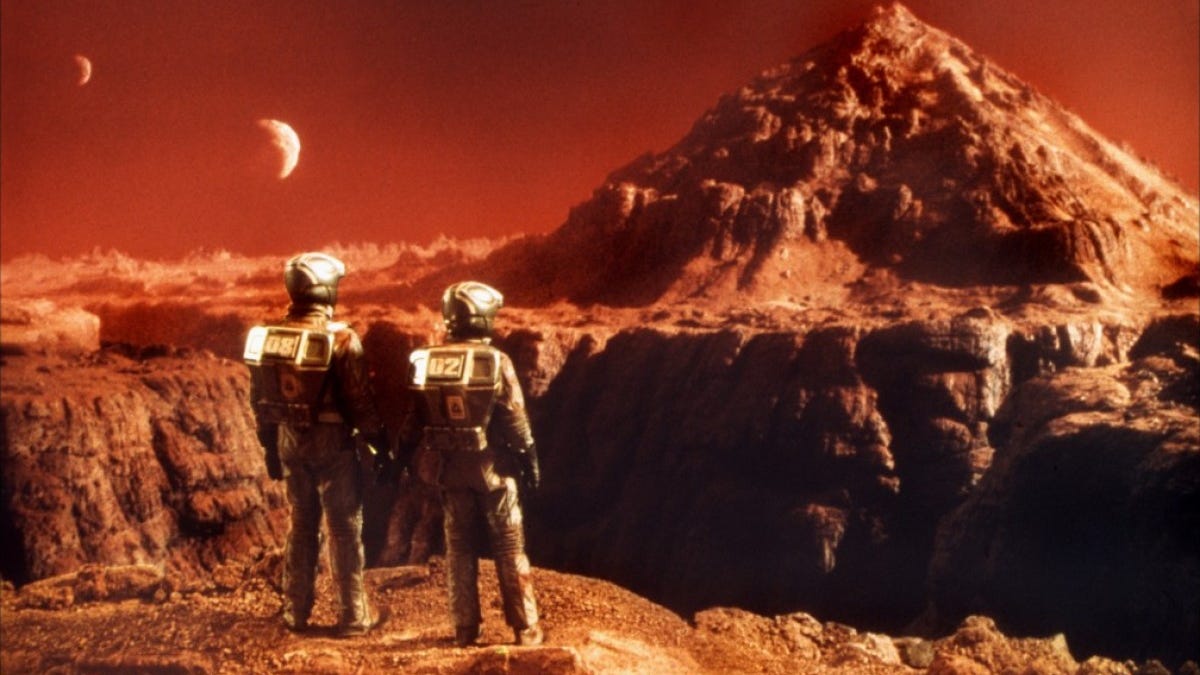Mars radiation fine for humans, Curiosity finds
Initial readings of cosmic ray radiation on Mars suggest it's about the same as on the International Space Station. Now we just need a spaceship.

"Now, this is the plan. Get your ass to Mars."
We all remember Schwarzenegger motivating himself to go to the Red Planet in "Total Recall" (anyone bother watching the remake?) and sure we'd like to go too. Now NASA's Curiosity Mars rover has determined that radiation levels on the planet's surface are safe for human explorers.
"The astronauts can live in this environment," Don Hassler, principal investigator on Curiosity's Radiation Assessment Detector instrument (RAD), told a news conference.
"Basically, we're finding that the Mars atmosphere is acting as a shield for the radiation on the surface and as the atmosphere gets thicker, that provides more of a shield and therefore we see a dip in our radiation dose," Hassler said.
The findings mark the first time that cosmic rays have been measured on the surface of another planet, and come 100 years after Victor Hess discovered cosmic rays on Earth by using a hot-air balloon.
Following Curiosity's landing on Mars in August, the rover's RAD device has measured radiation that's comparable to what astronauts experience aboard the International Space Station.
The robot explorer was also detecting radiation during its eight-month journey through space, and found levels were about double what they are on the planet.
Mars lacks a global magnetic field, and researchers believe this led to the loss of most of its atmosphere long ago under solar wind bombardment. RAD has found that as the remaining Martian atmosphere thickens and thins daily, radiation levels rise and fall by 3 to 5 percent.
Hassler added that the numbers he reported are preliminary and the data must still be calibrated. More precise information would help determine how much radiation astronauts would be exposed to during their journey to and from Mars as well as their stay.
"When you add up all those different contributions, you need to stay within your career limits," he said. "So over time, we're going to get those numbers. Since we've been on the surface, we have not yet seen a large solar flare or solar particle event like we saw during cruise (to Mars). When we do see one, that will be very interesting and very important."
Designing a spaceship with adequate radiation shielding for the long trip to the Red Planet is another matter altogether. Put Arnold in charge of that, I say.

